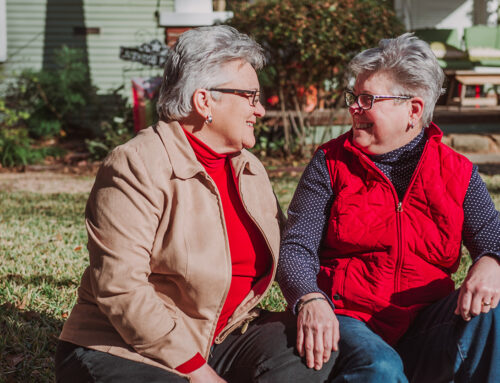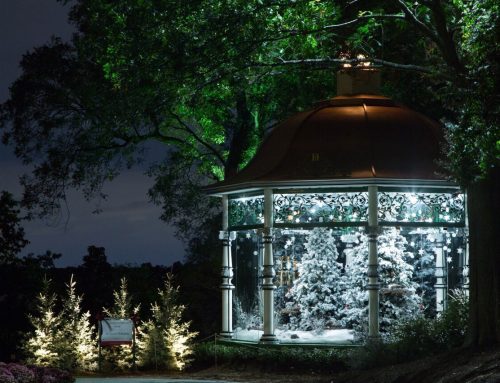Nothing brightens the spirit and soothes the soul like flower and plants. One of nature’s many gifts, living greenery isn’t just for special occasions – it’s for every day. Whether from your own garden or from a florist, it’s life-affirming to bring a touch of nature indoors.
All we really have to do is use a little imagination. Whether it’s a single flower or a lush bouquet of fragrant flowers, containers make a remarkable difference in presentation.
“There are no rules anymore,” says Renarldo Paker, owner of Eastside Flowers, 10228 E. Northwest Highway.
“Roses are beautiful in a Waterford vase, and they’re also stunning in a galvanized bucket. It all depends on the mood and how formal the setting is.”
Parker says he even has done arrangements in shoes and hats: “Any type or style of vase or container that will hold water can be used, from Grandma’s antique tea pot to the crystal wedding present, and anything in between.”
Parker, a Lake Highlands florist, urges people to look in their cupboards and closets and be open to experimenting.
“Even extraordinary containers can be used by adding a plastic lining. Then a small vase or a foam brick can be added as a foundation for the arrangement,” Parker says.
The right size of container also is important. A small bouquet, even one or two flowers, will look full and lush in a tiny vase. Whether your bouquet is small or large, volume is achieved when flowers burst and cascade over the rim of a container or vase.
“Once the flowers and container have been selected, the next step is to prep the flowers. Floral prep includes removing all foliage that will fall below the water level. Always re-cut stems before replacing them in water,” Parker says.
Stems should be cut at a 45-degree angle to ensure maximum amounts of water will be absorbed by the stem. When stems are cut straight across, it’s harder for water to penetrate the bottom when placed flat against the bottom of the container or vase.
“In arranging flowers, start at the rim of the vase and work into the center. Add flowers and space them as if they were points of a triangle. Criss-cross the stems as you insert them. This makes a grid that gives the arrangement support. The idea is to place the longest stems in the center of your bouquet. Periodically step back and look at the entire arrangement and make adjustments as needed.”
For a quick, last-minute arrangement, Parker suggests creating a topiary. They’re especially nice because only three or four flowers are needed. And with the added greenery and flowers at the base of the stems, the arrangement appears full. Topiaries not only look great on a dining table, but also work well in every room in the house.
When flowers are less plentiful during the fall and winter months, other alternatives can have an interesting appeal. Mike Thompson, owner of Sticks and Stones Garden Market, 5016 Miller, says greenery often is overlooked: “Leaves are great – the textures, the colors. A vase full of them looks wonderful, especially when you mix two or three different types and textures.”
And don’t overlook produce.
“If you’re decorating for a dinner party, try bundling five or six fresh whole green beans or asparagus, for example,” Thompson says. “Or try gathering small bundles of twigs with seed pods and tie with raffia. It’s a great way to decorate each place setting at a dinner table.”
You don’t necessarily need flowers for centerpieces either. Thompson prefers a grouping of eclectic pieces as an alternative. And it can all be created with things you already have in and around your home.
As an example, Thompson suggests using heirlooms, keepsakes or a vintage piece. Maybe you have a favorite piece of pottery, or a bowl, perhaps several smaller pieces of silver. Use one of these as a focal point for the centerpiece, and build an arrangement around it.
Look outside and find things that grow naturally, such as leaves and pods with texture and color, and small branches that curl and roll in different directions. Such things as crab apples, pine cones, reindeer moss or sheet moss all can be great filler pieces and can be placed in and around the objects.
Combinations are endless, but the idea is to let everything come together and interplay. And in the evening, candles, especially tea lights and votives, are essential to illuminate the piece.
Thompson suggests using these same creative ideas for gifts. European Baskets are especially popular because they can be custom made with a variety of items, many that can come from your home. Use those empty baskets you’ve stored in the closet, and fill with anything from vegetables and fruits to herbs – or a small bouquet of cut flowers, pictures of the children, or perhaps a favorite drawing done by your child at school, cookies, candles, wine or maybe even a packet of birdseed. There really is no limit in what can be included.
The central idea is that European Baskets are made to be functional. Everything in the basket is to be taken out and used or eaten. It’s a gift that will be remembered for years because it’s made from the heart.





